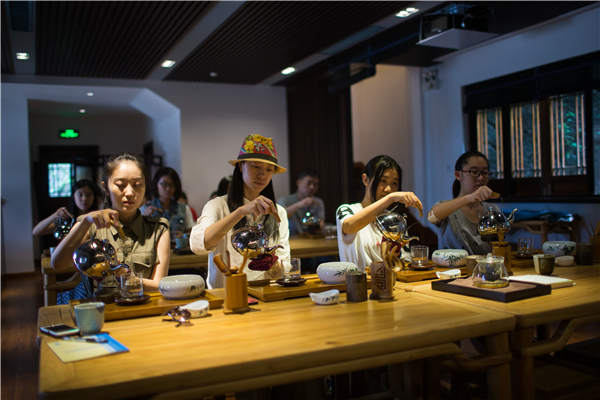Brewing culture
 |
|
The China National Tea Museum hosts many activities to help young generations better understand the country's tea culture. |
"Tea is ingrained in Hangzhou people's genes," he says.
He grew up drinking it in Meijiawu village, a place with premium plantations near the museum.
He and primary school classmates helped harvest Longjing before the Tomb Sweeping Festival, when the shoots are believed to be at their best, in the 1970s.
Frying the leaves-a process to halt oxidation shortly after harvest to seal in the green tea's superlative qualities-was inscribed as a national-level intangible heritage in 2008.
Visitors to the museum's new branch-opened in a hillside plantation in Longjing village last year to focus more on activities than exhibitions-can study customs surrounding Longjing and other teas, such as serving ceremonies.
The museum receives more visitors from abroad than any other in Hangzhou, Wu says.
It stands near the well from which Longjing claims its eponym, which translates as Dragon Well. The appellation hails from the ancient belief the shaft was a portal to a dragon's lair, since it sustained the sole water source during droughts.
This history-or at least lore-today charms visitors enchanted by Longjing's cultural cultivation.
Contact the writers through dengzhangyu@chinadaily.com.cn
















